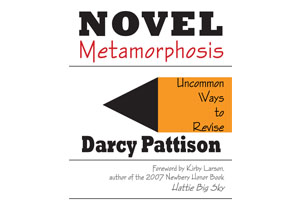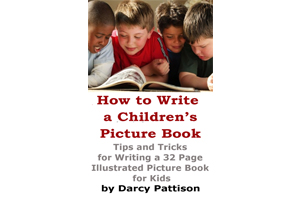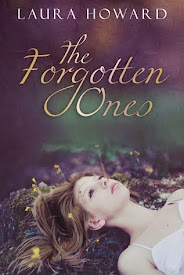Hope you had a fabulous Christmas!
Today I have Darcy Pattison from world-class writing blog, Fiction Notes, to teach us some of her tips on Pacing Your Novel!
Canadian author Paul O’Neill says, “Always grab the reader by the throat in the first paragraph, send your thumbs into his windpipe in the second, and hold him against the wall until the tagline.”
It’s called pacing.
First, you need a great opening line (http://www.darcypattison.com/revision/opening-lines/) that presents something unusual or intrigues in some way. Try putting something concrete in a character’s hands and putting them to work right away. Or intrigue with a bit of philosophy. Remember, the function of that opening line is to get the reader to read the next line. So, don’t agonize over this, just make sure it pulls the reader in.
The opening scene is likewise crucial and yet, here’s where many stories go wrong. The writer has written a first draft to find a story and hasn’t rewritten yet; the function of a second and all subsequent drafts is to find the most dramatic way to tell a story.
With that in mind, you must find a starting place that sets up the story’s setting, characters, tone, voice and mood. I usually have to add something to the story’s beginning, because the reader doesn’t care enough about my characters yet. Many writers need to cut the first 10 (or 20, or 30, or 40, or 50) pages, and start with something important at stake. Act One needs to build toward what some call the Inciting Incident, or the event that pushes everything toward Act Two. In other words, what changes? Why are we telling this particular story? Everything in Act One points toward and anticipates the big scene at the end of Act One. The character must make a decision, take a step, move. You must box him/her into a corner and only leave a tiny way to squeeze through the events to find a way out.
Unless you’re careful, Act Two can be a big letdown, the dreaded sagging middle. To avoid this. I like to create specific events at four points. The biggest are the midpoint and the Plot Point at the end of Act Two that points toward Act Three. The midpoint is a good place to throw in a twist and spin emotions 180 degrees. The end of Act Two must be a huge event, usually where the main character tries mightily to solve the story problem and fails miserably—and yet, something learned in this scene will eventually solve the story’s problem.
Throw in two more minor events: the first is halfway between the beginning of Act Two and the midpoint, or in other words, about one-fourth of the way through Act Two. The other is about three-fourths through Act Two. I like to connect these two events in some way to add continuity. These make sure that the midpoint doesn’t single-handedly hold up the pacing of Act Two. If you nail these four events, you will avoid the dreaded sagging middle.
During Act Three, you must never let up the pressure on the protagonist. Your motto is “Contents under pressure.” I find this the hardest act to write, because I rush through it. Slow down and put the protagonist through an emotional roller coaster. Throw several more major problems into the mix and let the outcome hang in the balance.
Overall, there should be no places where the protagonist gets to rest. Sure, we might have a moment here or there to gloat in some small progress, but even there the reader must be anxious to turn the page. Throughout the story, the reader must be on the edge of his/her seat trying to answer one simple question that embodies pacing: “What happens next?’
Keep your reader guessing about what happens on the next page and you’ll nail the pacing.



















Thanks for this post, its so right that chapter one usually needs scrapping. I made chapter two the beginning, and it works so much better:D I'll be sure to check back in future :D
ReplyDeleteGreat suggestions! ;o) I say if you can't grab the readers attention with the first couple of paragraphs, then they won't stick around for the 30th paragraph. ;o)
ReplyDeletePS: Laura -- you always find the best people to interview! Love your site because it is always filled with lots of great ideas and information.
Suzan